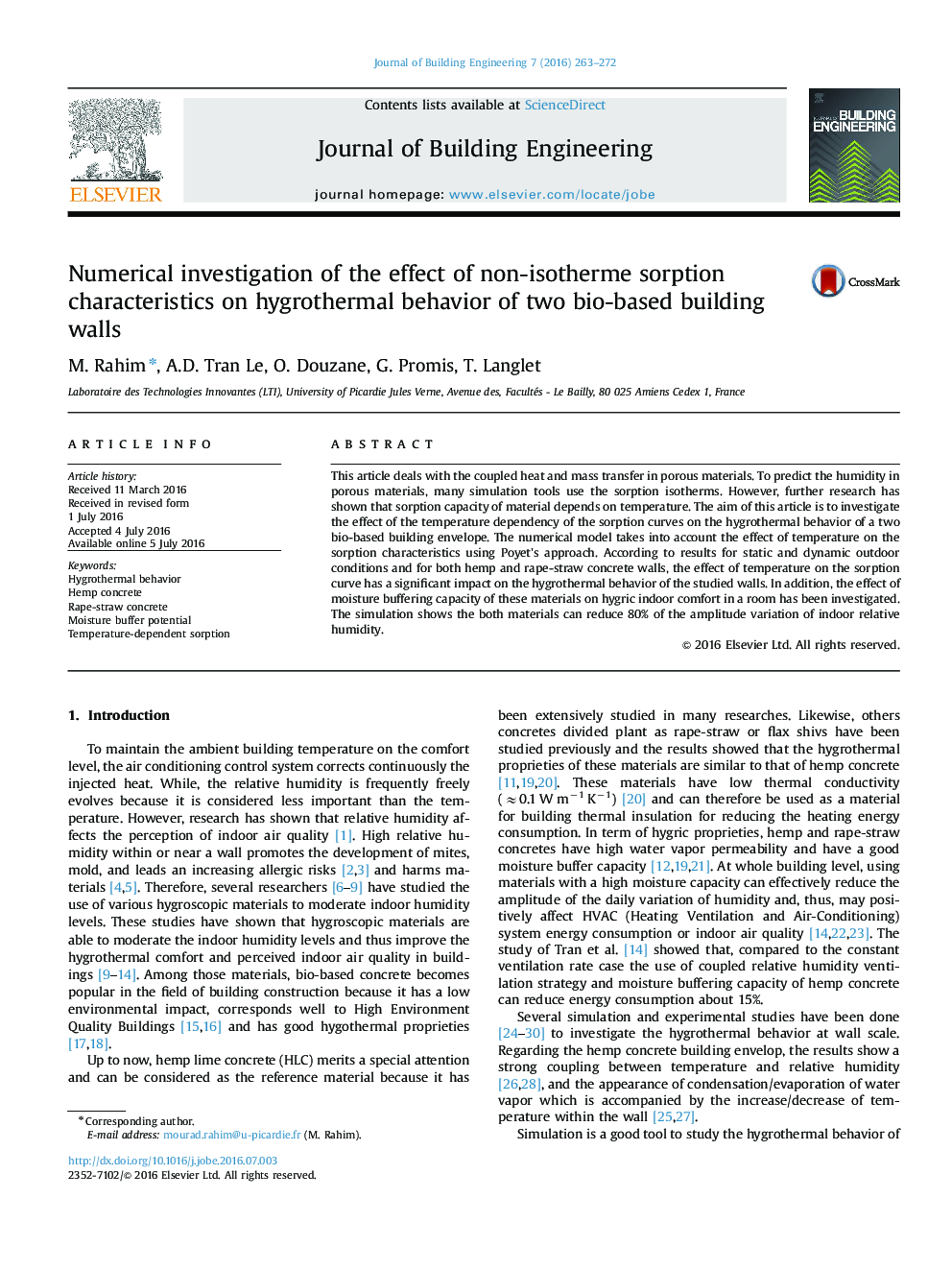| Article ID | Journal | Published Year | Pages | File Type |
|---|---|---|---|---|
| 283774 | Journal of Building Engineering | 2016 | 10 Pages |
•Two bio-based building walls “Hemp and Straw-rape concretes”.•Heat and mass transfers model validation, under dynamic conditions.•Both Isoth and Non-Isoth models predicted well the T profile of walls.•Only the Non-Isoth model predicted well the RH profile of walls.•The both materials lead to reduce the amplitude of indoor RH of 80%.
This article deals with the coupled heat and mass transfer in porous materials. To predict the humidity in porous materials, many simulation tools use the sorption isotherms. However, further research has shown that sorption capacity of material depends on temperature. The aim of this article is to investigate the effect of the temperature dependency of the sorption curves on the hygrothermal behavior of a two bio-based building envelope. The numerical model takes into account the effect of temperature on the sorption characteristics using Poyet's approach. According to results for static and dynamic outdoor conditions and for both hemp and rape-straw concrete walls, the effect of temperature on the sorption curve has a significant impact on the hygrothermal behavior of the studied walls. In addition, the effect of moisture buffering capacity of these materials on hygric indoor comfort in a room has been investigated. The simulation shows the both materials can reduce 80% of the amplitude variation of indoor relative humidity.
